Tokina AT-X PRO FX SD 24-70 mm f/2.8 (IF)
3. Build quality
In the photo below the tested Tokina 24-70 mm is positioned between the full frame Tokina 16-28 mm f/2.8 and the Tokina 14-20 mm f/2.0 designed for smaller sensors.
Please Support UsIf you enjoy our reviews and articles, and you want us to continue our work please, support our website by donating through PayPal. The funds are going to be used for paying our editorial team, renting servers, and equipping our testing studio; only that way we will be able to continue providing you interesting content for free. |
- - - - - - - - - - - - - - - - - - - - - - - - - - - - - - - - - - - - - - - - - - - - - - - -
The Tokina 24–70 mm starts with a metal mount which surrounds the contacts and a rear element of the lens, 29 mm in diameter. The element moves and it is situated on the same level as the mount at 24 mm. When you pass to 70 mm it hides inside the tube almost 3 cm deep. The area next to it is nicely blackened and matted; unfortunately when the whole element system shifts it reveals a distinct slit through which you can glance at a lot of electronic parts. Any air-tightness of the construction is out of question.
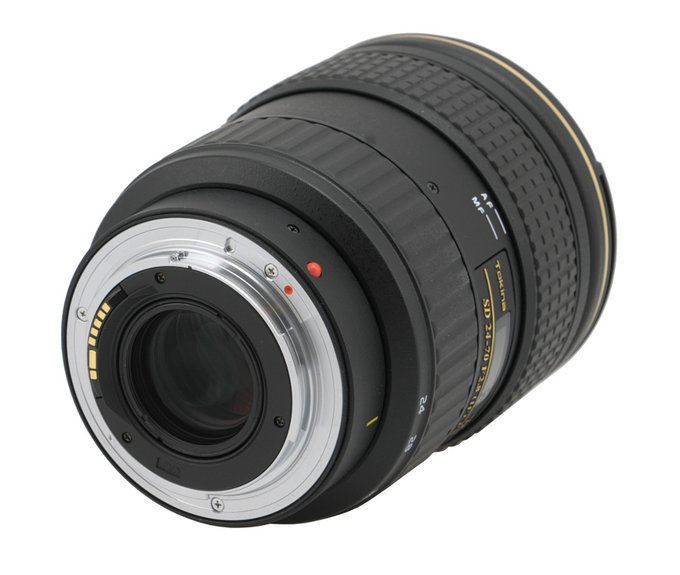 |
The first part of the proper tube of the lens is an immobile ring on which you can find a red dot, making the alignment with a camera easier. Next you see a zoom ring, 30 mm wide. It is covered by ribbing armour very pleasing to the touch and below the ribs there are focal length marks at 24, 28, 35, 40, 50 and 70 mm. The ring turns with some resistance, different in the 24-35 mm range than in the 35-70 mm range. In the first case you can actually feel how some parts scrape against the other.
Further on, you see a plate with the name and the parameters of the lens; it surrounds a window with a distance scale expressed in feet and meters. On the other side you can also find the serial number of the instrument and information that it was produced in Japan.
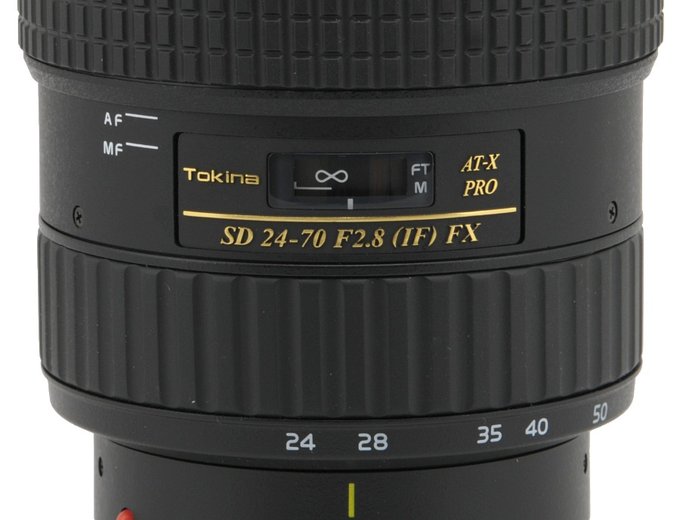 |
A manual focus ring, ribbed and very comfortable to use, is another part of the lens. Being quite well-damped, it works properly well in the MF mode. Running through the whole distance range needs a turn through an angle of about 50 degrees. It is a very small value so don’t count on very precise manual settings.
When you want to change from AF to MF mode you need to shift the whole ring toward the mount. The solution, proudly called by Tokina One-touch Focus Clutch Mechanism, is hardly among our favourites. Why? Firstly in the AF mode the ring is simply idle as it moves with a lot of play but doesn’t change the scale (there is no FTM full time manual mechanism). Secondly there is no possibility of making small manual adjustments to the settings of the autofocus. Passing to the MF mode always entails a sharp jerk and a small but noticeable jump on the distance scale so the autofocus work is destroyed and everything has to be set up so to speak from scratch…still it should be mentioned that the movement of the ring of the Tokina 24-70 mm specimen we got for our tests was quite smooth; it was also more difficult to jam or misplace than rings featured by other lenses of that producer we’ve had an occasion to test.
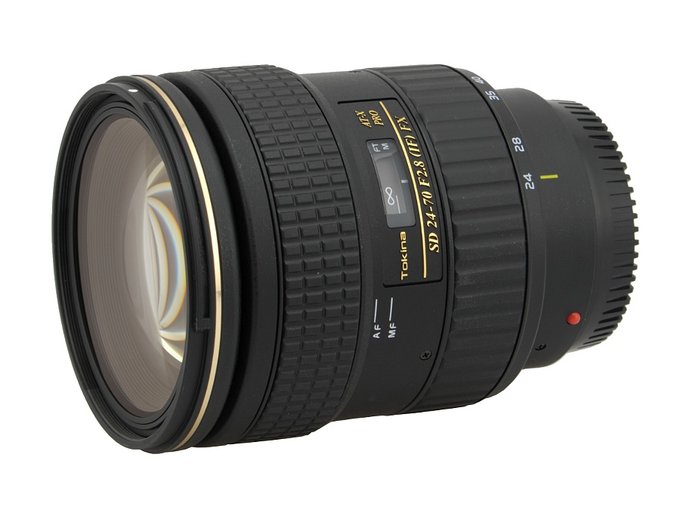 |
At the very end of the lens you see a hood mount which surrounds a non-rotating filter thread, 82 mm in diameter. The filter thread goes round the front element which moves and is 71 mm in diameter. That element with the whole front element system extends on a stable, one-part tube made of metal; as a result the length of the lens might increase by 42 mm when you pass to the 70 mm .
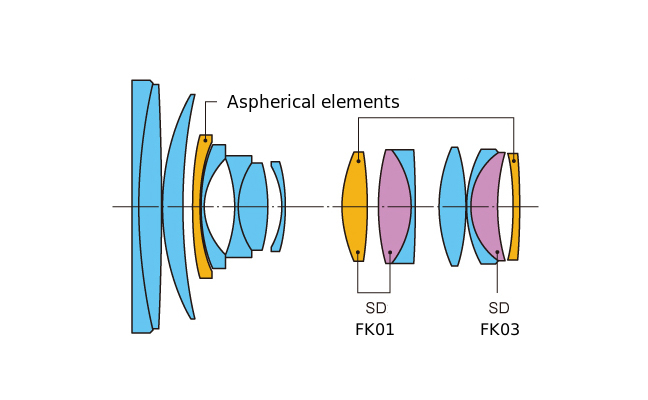
The optical construction of the lens consists of 15 elements positioned in 11 groups. One element is made of low dispersion SD (FK03) glass and other - of low dispersion SD (FK01) glass. Two elements are aspherical and one is both aspherical and made of low dispersion SD (FK01) glass. Inside you can also find an aperture with nine diaphragm blades which can be closed down to a value of f/22.
Buyers get in the box both caps and a petal-type hood for the lens but no pouch or lens case.
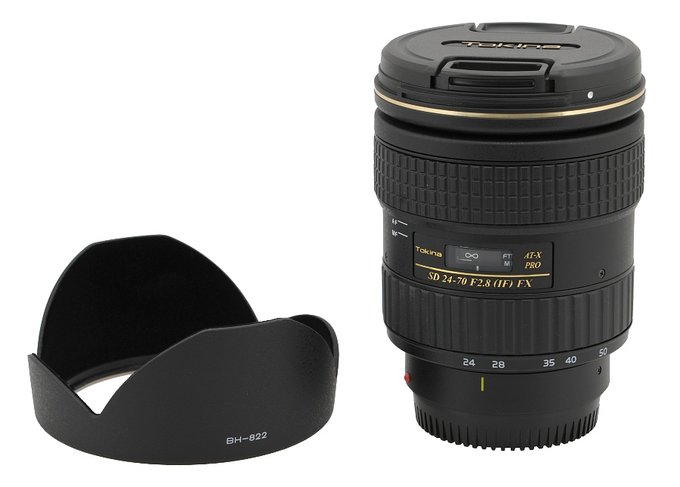 |






